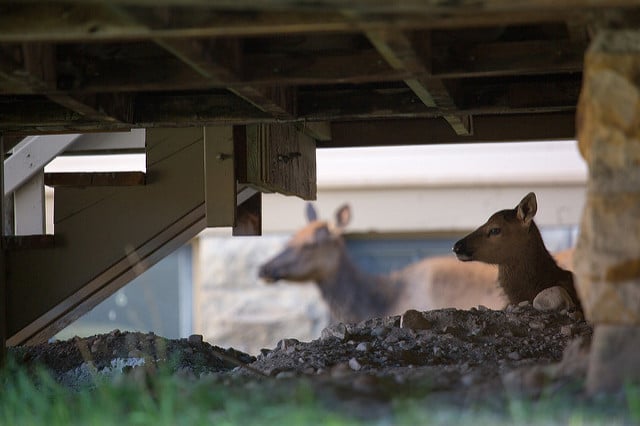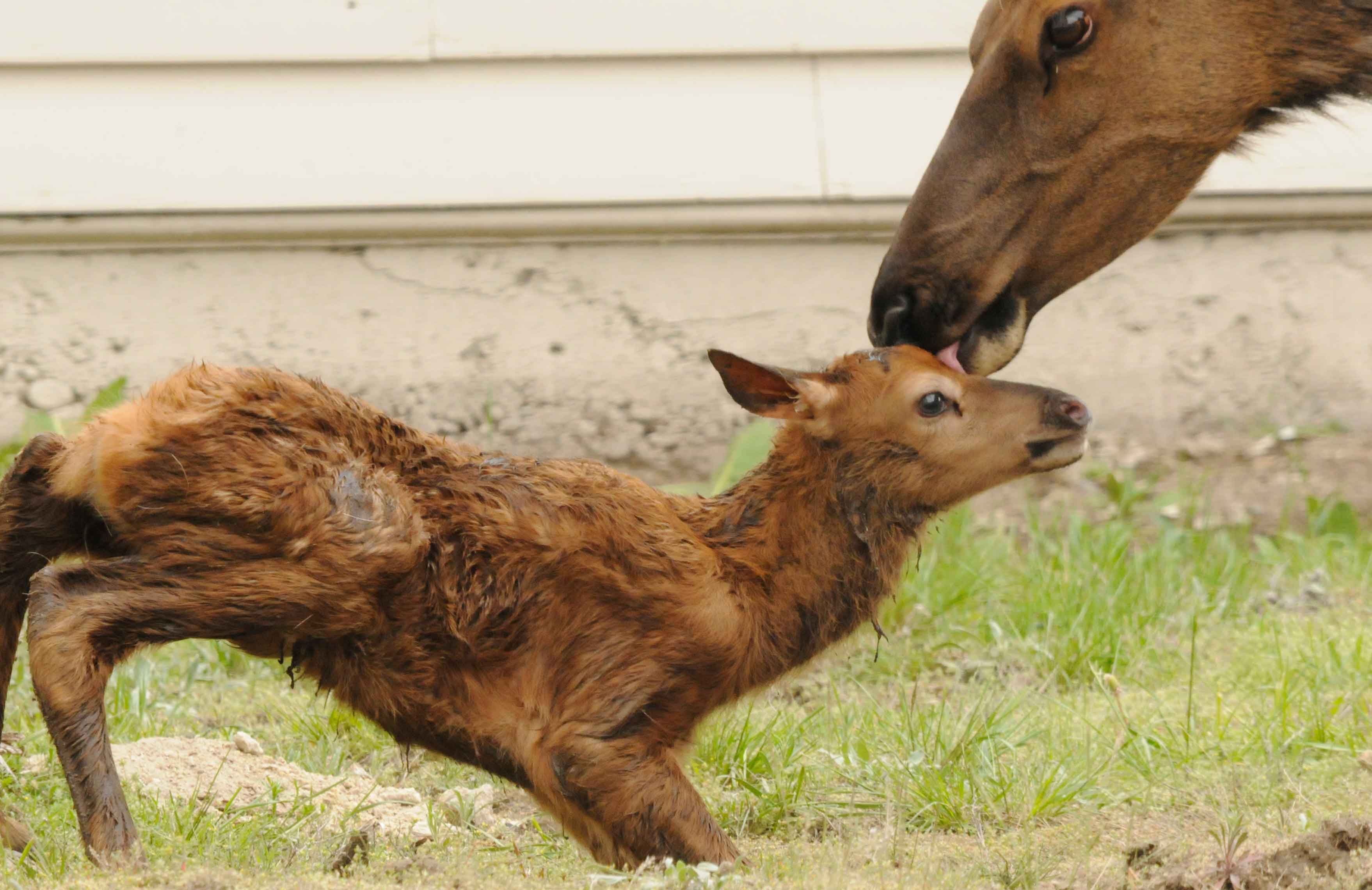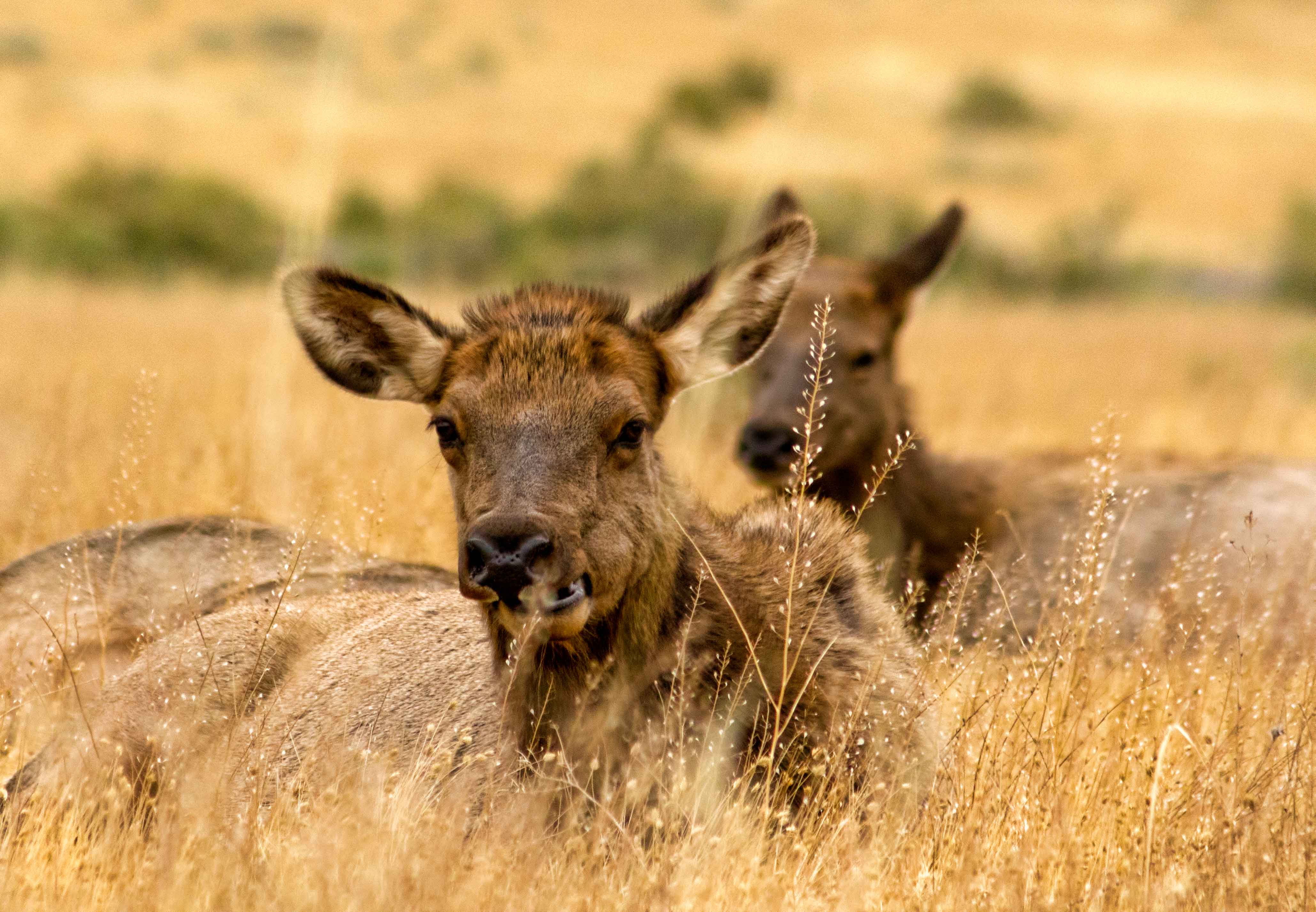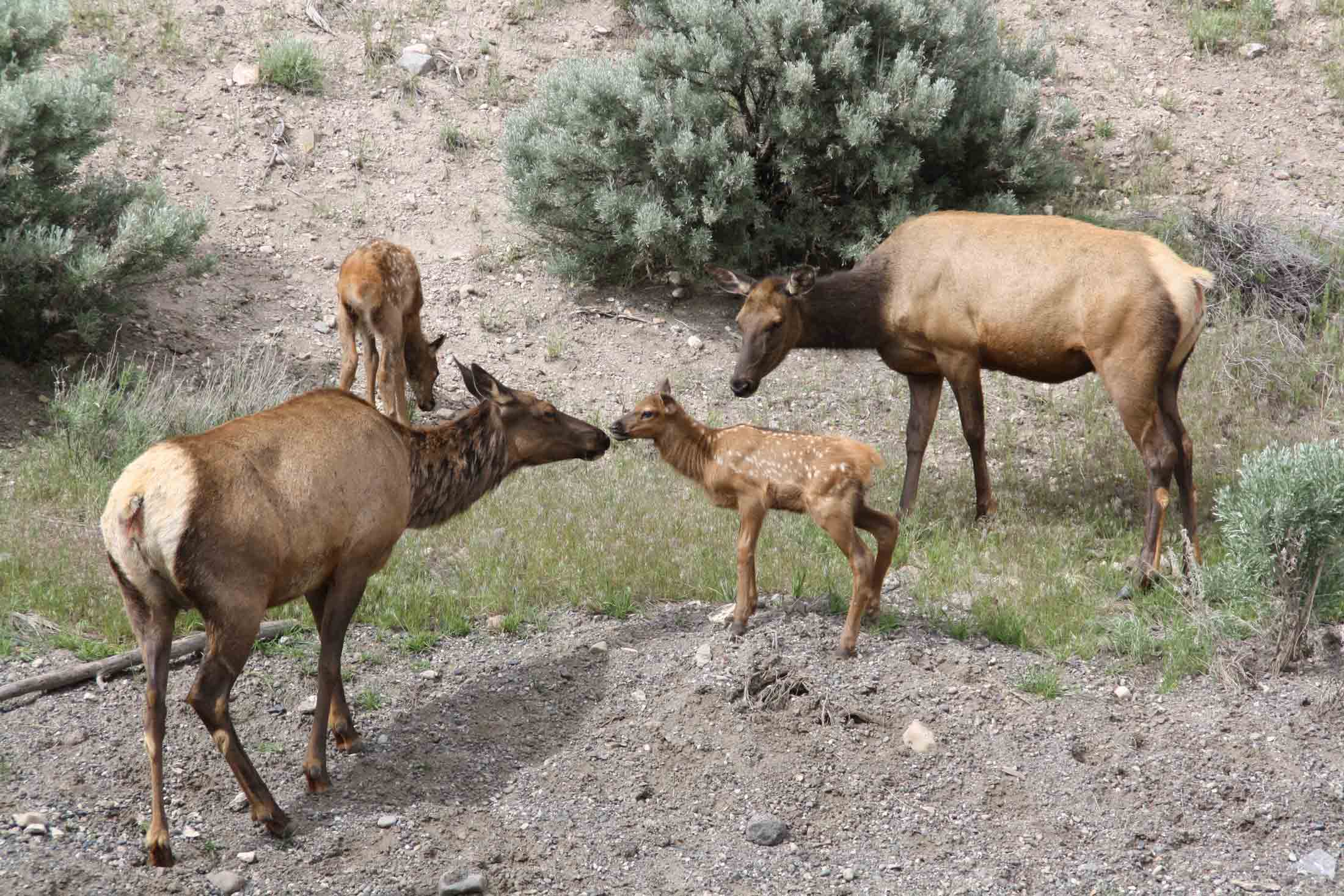4 Tips for Staying Safe Around Newborn Elk
ELK SAFETY
The Greater Yellowstone Ecosystem is home to approximately 30,000–40,000 elk (Cervus canadensis). Yellowstone provides summer range for an estimated 10,000–20,000 elk from six to seven herds, most of which winter at lower elevations outside the park. Ungulates that migrate typically give birth around periods of peak vegetation green-up to overlap with high-nutrition plant phases. Nutritious food allows mothers and calves to build up fat reserves. Calves are born in May and June. They are brown with white spots and have little scent, providing them with good camouflage from predators. They can walk within an hour of birth, but they spend much of their first week to 10 days bedded down between nursing sessions. Soon after, they begin grazing with their mothers, and join a herd of other cows and calves.[1]
As we celebrate spring and the birth of new life in Yellowstone, a reminder to show some R.E.S.P.E.C.T. to the momma elk and their new calves in Yellowstone. Mammoth Hot Springs, in particular, is a popular area for cow elk to give birth. It’s very common for cow elk to aggressively defend newborn calves and hide them near buildings and cars. As a result, Yellowstone has seen a few serious injuries resulting from elk encounters.
To keep yourself and the wildlife safe, follow these 4 safety tips:
1. Be extra cautious anywhere elk and calves are present
Cow elk are especially fierce and protective around their calves in the spring. Cow elk are much more aggressive towards people during the calving season and may charge or kick. You can sometimes stop a charging elk by making yourself look bigger, yelling loudly, and aggressively waving your arms or a jacket. If an elk charges you, find shelter in your vehicle or behind a tall, sturdy barrier as quickly as possible.
2. Approach blind corners slowly
Around Mammoth Hot Springs, elk often hide calves near cars or buildings. Stay alert. Be cautious when exiting buildings or approaching blind corners.
3. Maintain a safe distance (at least 25 yards)
You are responsible for your own safety. Always stay at least 25 yards (23 m) away from elk. The animals in Yellowstone are wild and unpredictable, no matter how calm they appear to be. The safest way to view wildlife is through a telephoto lens, a spotting scope, or a pair of binoculars. Do not approach, encircle, follow, or feed any animal.
4. If you happen to come across an elk calf alone and stashed, back away and be sure to notify rangers so they can keep other visitors aware and safe.

Want to know more about how you can stay safe and respectful while traveling in Yellowstone? Learn more about taking the #YellowstonePledge.
It’s a personal promise you make to yourself and the park. “I pledge to protect Yellowstone National Park. I will act responsibly and safely, set a good example for others, and share my love of the park and all the things that make it special.” Thanks for putting the Pledge into action!
For more travel experiences to Beautiful Places on Earth™ available from Xanterra Travel Collection® and its affiliated properties, visit xanterra.com/explore.
Want to experience Yellowstone in-depth? See what makes Yellowstone National Park a great place to work for a season or longer!
Read More Elk Stories
- Read More Elk Stories


